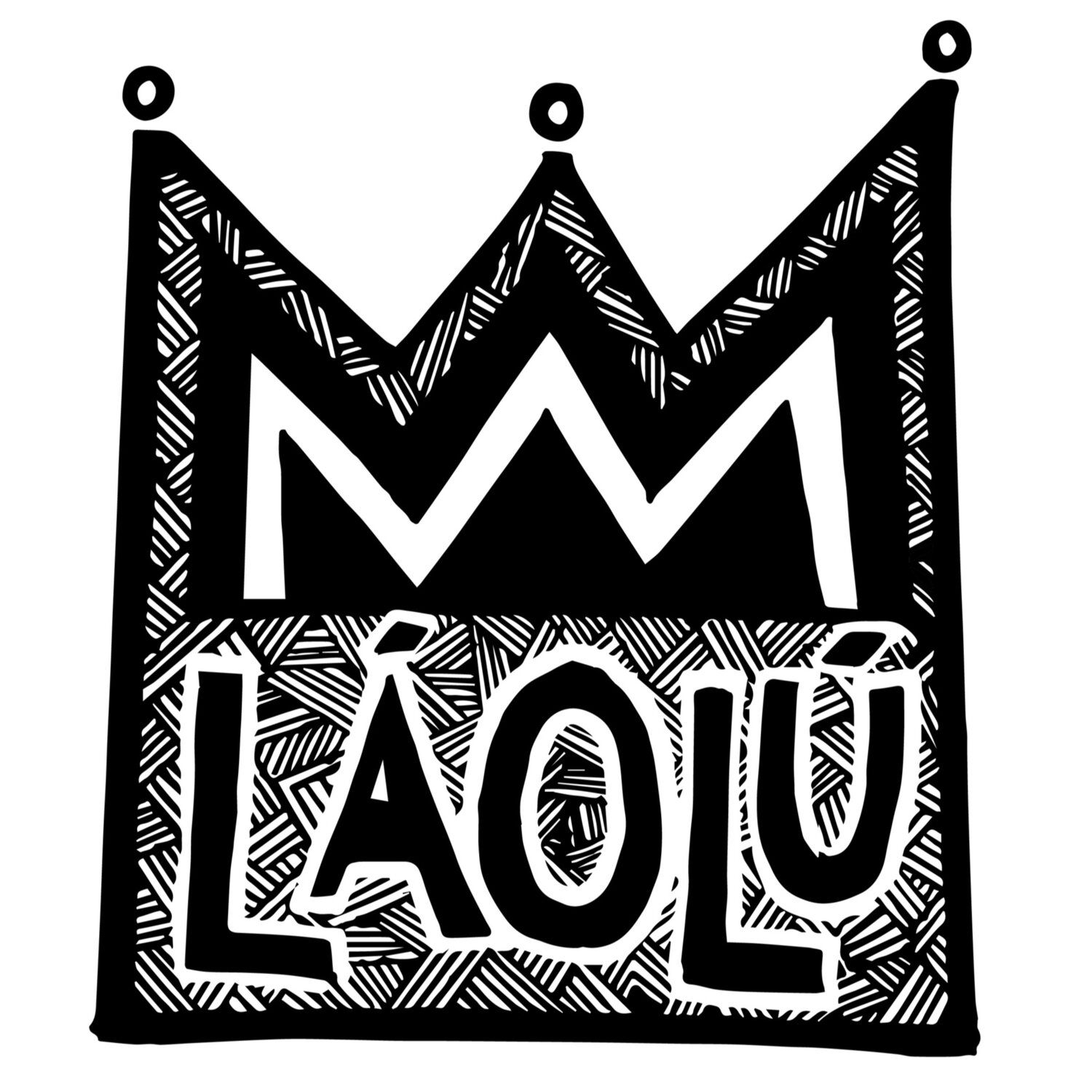Title: Yeye Oshun
Medium: Acrylic on wood and canvas
Golden-hued Yoruba goddess Oshun stuns in Láolú’s charcoal and acrylic on wood masterpiece honoring the orisha of water, purity, fertility and love. Surrounded by water pathways, spirals that represent the circle of life and her disciples depicted as the roots of her being - Láolú chooses to highlight the most significant deity in Afro-Caribbean cultures.
Vessels for life are found in the vases sprouting from her hips, and flowing from the bowl poised above her head. Her hands turn into golden streams of water flowing throughout the portrait. As the nurturer of humanity and the central figure for the creation of human beings, she is surrounded by faces (depicted as masks) of men, women and children whom she gave life to via the sacred water that flows through her. Spirals, a common theme in Láolú’s work signifying life, are dispersed throughout the piece, including on Oshun’s breasts. By using ‘The Sacred Art of the Ori’ style Láolú pays tribute to the Yoruba origin of Oshun, tying the creation of her origin story back to Osogbo, Nigeria. Osogbo, a sacred city, is said to be protected by Oshun. Devotees make an annual pilgrimage to Osogbo for the Oshun festival, paying homage to the orisha, offering prayers for fertility and wealth. Oshun, who is also referred to at times in Yoruba culture as Yemonja is derived from the Yoruba words Yeye or Iya (“mother”), omo (“child/children”), and eja (“fish”) and literally means “Mother whose children are the fish.”
Oshun was last famously invoked by Beyoncé in her films, Lemonade (2016) and Black is King (2020). In Black is King, a love letter to the African diaspora, Beyoncé wears Oshun’s yellow, shining beads and cowrie shells; she emerges from water (similar to the opening scene of Lemonade) and sings ‘I am Osun.’ While Beyoncé introduced maintstream audinces to the orisha, followers of the Santería religion in Cuba, Haiti and Brazil have worshiped Oshun or Yemaya since the 16th century.
Emerging in the bottom left of the piece, Láolú showcases the merging of two cultures that worship and celebrate the goddess through the intertwining of Yoruba and traditional Caribbean symbols. In the 16th century when enslaved Africans were brought to the new world, they kept their religious worship of the orishas. When the new Afro-Caribbean religion Santería emerged, so did new names for Oshun, who is known as ‘Yemaya’ in Cuba and ‘Oxum’ in Brazil and Haiti. In Santería, Yemaya is considered the Ocean Mother Goddess and is often associated with the moon.
In all her forms, Oshun is the giver of life through water and that is unmistakable in this piece.

